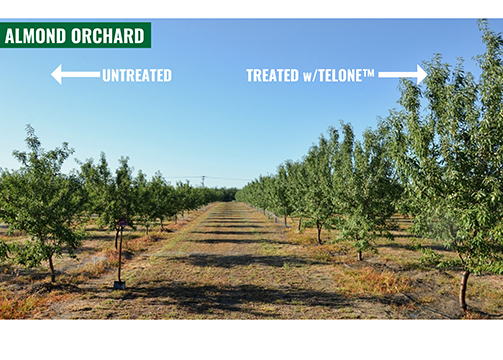How to Prevent Chilling Injuries in Peaches
 Peach storage does not come without complications, and most varieties are susceptible to some internal breakdown in storage if you don’t manage the process properly. Cold storage is used with harvested peaches to control the processes of ripening and deterioration. Chilling injuries are a type of internal breakdown that occurs as the result of cold storage. Such injuries can limit the fruit’s storage life, as well as its acceptance among consumers.
Peach storage does not come without complications, and most varieties are susceptible to some internal breakdown in storage if you don’t manage the process properly. Cold storage is used with harvested peaches to control the processes of ripening and deterioration. Chilling injuries are a type of internal breakdown that occurs as the result of cold storage. Such injuries can limit the fruit’s storage life, as well as its acceptance among consumers.
Dan Ward, Extenson Specialist in Pomology for the Rutgers Agricultural Research and Extension Center (NJ), offers practical steps you can take to reduce the problems associated with storing peaches.
Demanding Requirements
Ward explains that the underlying issue with storing peaches is that they simply do not store as easily as other crops. They have a shorter shelf life and more demanding requirements than other fruits. In addition, most of the issues that develop in storage don’t necessarily result in a change in appearance, meaning the consumer may still buy the fruit, unaware that there are any problems. However, chilling also can impact the taste and texture of the fruit.
Of course, there are various types of visible, physical injuries that can occur. These can include bruising from pressure or from the fruit being dropped or packed too deep, and scarring from limbs, birds, or insects. Peaches with these types of physical injuries tend to get eliminated in the picking or packing process and usually do not reach the consumer.
However, the greater challenge is dealing with the physiological problems that occur with storage such as internal breakdown, which manifests in chilling injuries such as:
- Fruit that is hard or dry with a mealy or woolly texture
- Internal browning around the pit
- Flesh bleeding or internal reddening
According to Ward, the vast majority of the varieties behave similarly in storage, and nearly every type of peach is susceptible to chilling injury.
Part of what makes avoiding these problems such a challenge is the need to harvest peaches that are mature but not ripe. Peaches need to be harvested when they are commercially mature and allowed to ripen after being removed from the tree.
It’s difficult to pick fruits that have reached commercial maturity, said Ward. Not all of the fruit will reach maturity at the same time. Plus, the color of the fruit can create additional obstacles. Peaches with red coloring are desirable and prevalent in newer varieties, but they prove to be harder to pick at the desired state of maturity. Then, when those peaches are put into storage, chilling injury can occur when temperatures are too cool for ripening but too warm for staving off internal breakdown.
Right Temperature is Key
It’s crucial that peaches are stored at the right temperature. The warmer the temperature, the faster the fruit will ripen. The optimum ripening range is 50°F to 78°F, whereas 29°F to 35°F is the optimum range for cold storage. Between those two ranges — 35°F to 50°F — is considered the “killing zone,” said Ward, or the range in which peaches are most likely to develop chilling injury.
When peaches are stored in that intermediate temperature zone, the environment is not cool enough to slow fruit deterioration, and it can promote chilling injuries.
In addition to maintaining proper storage temperature, there are some protocols that will help avoid common storage issues, said Ward. This includes holding the fruit at a warmer temperature for a period of time after it is picked.
For example, after the fruit is picked, it should go through an initial cooling period, and then it should be brought into a warm room for a length of time dependent upon how green the fruit is. Storing the peaches at this warmer temperature will help start the ripening process.
Afterward, they should go back into cold storage. This should result in “much less” development of chilling injuries, said Ward.
“Riper fruit tends not to develop as much chilling injury,” he said. “It’s a controlled ripening.”
Another way that growers can avoid storage problems is by choosing breeds with less red color.
“The best nondestructive indicator of peach maturity is the peel,” said Ward. “Green to yellowish or buff color is the best single nondestructive indicator of peach maturity.”
Plus, you can observe these indicators without pulling the fruit off the tree.
When peaches have a lot of red color, it makes it more difficult to observe these color indicators, and pickers have to rely more on size, shape, or evenness — none of which are as helpful as color, he said.
Tips for Ripening and Handling Peaches
- Minimize handling and stacking
- Market fruit as soon as possible
- Market ripest fruit first
- Ripe New Jersey peaches do not need to be preconditioned and will generally not get woolly or mealy
- Peach Flesh Firmness:
- Ready to eat = 2 to 3 pounds
- Ready to display = 6 to 8 pounds
- Ready to pick = 10 to 16 pounds
- At 68°F (20°C), peaches lose about 2 pounds of flesh firmness per day










